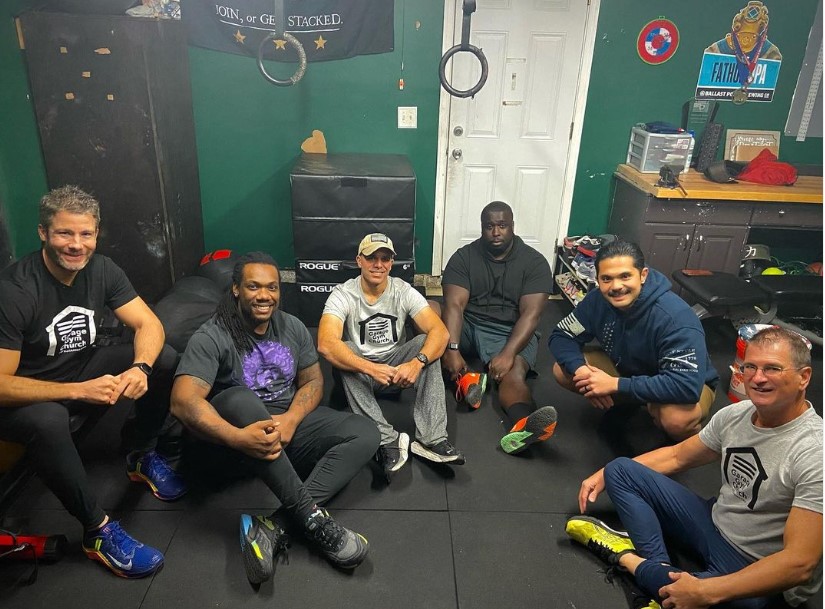Recently I was browsing through the aisles of a local dollar store. As I picked up a few things I could not help but notice that people were there with grocery carts shopping for food. Their carts were filled with canned and packaged goods. The nearest store was miles away. I understand what it means to not have because I grew up under very modest circumstances but it broke my heart to see people shopping at a store where there were no fresh fruits and vegetables and no meat; there was only junk food.
I get daily tweets and messages from fitness professionals, nutritionist and dieticians alike who are so easy to discuss America's obesity problem. Some say its a simple fix and that Americans just need to have more control over the choices that they make. The real issue for many Americans is that they have no choices. Many people live in neighborhoods where they have no access to healthy food and in some cases, even if they have access they can't afford the prices of the healthy food.
What we are talking about here is food deserts; neighborhoods that lack fresh foods, local supermarkets, and residents depend on corner stores to purchase food (Black & Macinko, 2008, p.6). Some of the specific issues with food access include:
- Large chain stores provide cheaper prices than smaller stores, but are less likely to be located in lower-income inner-city neighborhoods.
- Lower prices might reflect decreased food quality, freshness, or diversity of culturally preferred foods (Black & Macinko, 2008)
- African Americans less likely to live in census tracts with a supermarket compared with Whites (Drewnowski et.al, 2012)
- Lower-income neighborhoods overall had less access to chain stores than middle- and upper-income neighborhoods; and
- Independent, non-chain stores were more prevalent in predominantly African-American and Hispanic communities than in predominantly Caucasian communities (Whitacre et.al, 2009p. 14).
Based on these facts and unsafe neighborhoods associated with low income areas that prevents exercise, residents of these communities make up a large portion of America's obesity populations. As mentioned above, African Americans and Hispanics are largely affected by food deserts thus the CDC reports that Non-Hispanic blacks have the highest age-adjusted rates of obesity (49.5%) compared with Mexican Americans (40.4%), all Hispanics (39.1%) and non-Hispanic whites (34.3%) (“Adult Obesity Facts”).
What can we do? Having a heart to help others and being sensitive to the needs of others is what Jesus called us all to do. Philippians 2:4 says, "Let each of you look not only to his own interests, but also to the interests of others." There are local churches with food pantries across the country. One way to help is to donate healthy options to food pantries. You would be surprised how many families depend on the churches food pantry for food.
Another option is to get involved with local policy makers about the make up of neighborhoods as it relates to food access. Lastly, we can educate ourselves and those around us. There are resources available to many who live in food deserts but certain obstacles prevent their effectiveness. For example, in Atlanta some farmers markets now accept EBT cards (food stamps) but these farmers markets are not located in the communities that need the access. Additionally the information about this resource is not promoted to those who need it. If we learn about this issue and spread the word about it and the resources available in our community, we just might make a difference.
The most important thing we can do is to not place judgment on those who might be obese or overweight. Everyone struggles with something and their struggles is no different that yours. You never know what someone is going through or what circumstances they have faced that may have determined how they are today. Our goal is to love, not judge or condemn. No matter what a persons issue or sin is, we are called to love them and show the love of Christ. Galatians 5:14 says, "For the whole law is fulfilled in one word: “You shall love your neighbor as yourself.”
References:
Adult Obesity Facts. (2013). Centers for Disease Control and Prevention. Retrieved from https://www.cdc.gov/obesity/data/adult.html
Black, J., & Macinko, J. (2008). Neighborhoods and obesity. Nutrition Reviews, 66(1), 2-20.
Drewnowski, A., PhD., Aggarwal, A., PhD., Hurvitz, P. M., PhD., Monsivais, P., PhD., & Moudon, A. V., DrSc. (2012). Obesity and supermarket access: Proximity or price? American Journal of Public Health, 102(8), E74-E80. Retrieved from https://search.proquest.com/docview/1039278623?accountid=458
Whitacre, P. Tsai, P. & Mulligan, J. (2009). The Public Health Effects of Food Deserts:
Workshop Summary. The National Academies Press, 1-114.













